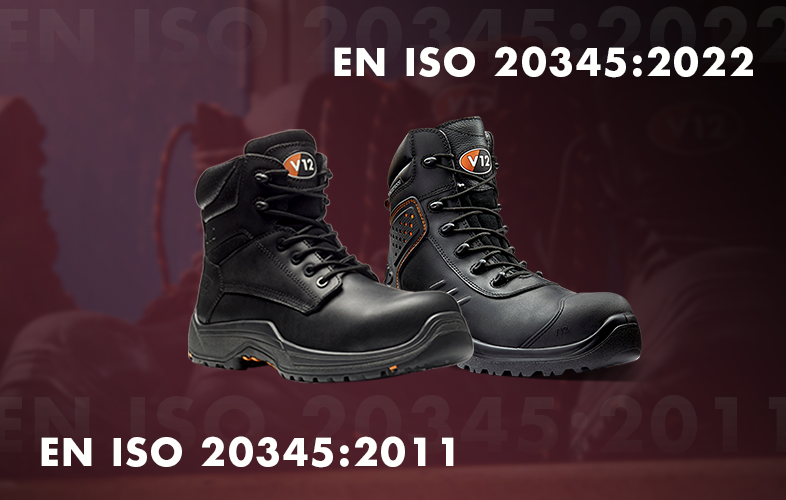In 2022, the new safety footwear standards came into effect. A number of areas of the EN ISO 20345:2011 standards were revised, including testing methods, safety codes and classifications.
Since then, the two standards have existed alongside each other, which is why you may well have seen and indeed offered safety footwear tested to both editions. But things are changing later this year.
The EN ISO 20345:2011 safety footwear standards are being withdrawn and replaced by the updated EN ISO 20345:2022 version on 11th November 2024 - but that doesn't mean products tested to the 2011 standards will become invalid anytime soon.
WHAT DOES THIS MEAN FOR SAFETY SUPPLIERS?

Firstly, remember that until 11th November 2024, both 2011 and 2022 are acceptable standards for manufacturers to test safety boots.
So, if you’re offering boots with a certification showing they were tested before this date, they will still be valid.
Importantly, once this date has passed, you are still legally allowed to stock and sell footwear tested to the 2011 standard.
While no new footwear can be produced and tested to the old EN ISO 20345:2011 standard beyond 11th November, boots tested and certified to the 2011 standards will remain valid beyond this date for a maximum of five years after the certification date.
This means that if you’re a safety procurer, you could technically purchase safety boots tested to the old 2011 standard on the day before the 11th of November expiry date, and keep them in stock and sell them for a further five years. In other words, safety boots can’t be manufactured and tested to the 2011 standard past this date, but any boots made before this date to this certification can still be sold and worn legitimately for a further five years.
WHY 5 YEARS?
The five-year certification life given to boots tested to the 2011 safety footwear standards is in place for a number of reasons.
- There is a price incurred to manufacturers when updating safety footwear certifications, so many are doing this gradually, which is why a brand might have some of its footwear currently tested to both standards, so they can work this new cost into their budgets over time.
- If multiple manufacturers re-tested all their footwear at the same time, this would cause significant capacity issues with the testing houses, and they would inevitably struggle to keep up with this demand.
- Updating any ISO is a lengthy process, and it takes time for manufacturers and suppliers to understand the changes and commercial implications, so having the two standards running side by side for 5 years allows time for all stakeholders to adjust and plan.
IS THERE A PREFERABLE STANDARD FOR SAFETY SUPPLIERS?
 While safety boots can still be sold five years after the 2011 withdrawal and will still be compliant, it's in manufacturers’ interests to retest existing products and test new products to the 2022 standard. And this is good news for you.
While safety boots can still be sold five years after the 2011 withdrawal and will still be compliant, it's in manufacturers’ interests to retest existing products and test new products to the 2022 standard. And this is good news for you.
It means your footwear offering will be consistent sooner, and as manufacturers know 2022-tested products could be stipulated by distributors and their customers, it’s unlikely you’ll have to wait until November 11th to see 2022 tested boots in your offering.
So, now you know the key dates. But do you know all of the 2022 safety footwear updates? To support you with all the information you need, click below and view our whitepaper.





